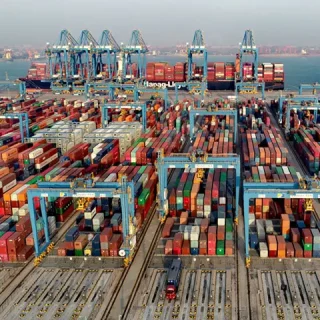As the architecture of global finance continues to shift under the weight of geopolitical tension, economic sanctions have emerged not merely as a diplomatic instrument but as a central feature of modern financial risk. In this climate, private clients—particularly those with international exposure—are responding by rethinking the very foundations of how wealth is structured and protected.
This article draws from trusted legal, financial, and compliance sources to examine the strategies high-net-worth individuals (HNWIs) are adopting to maintain resilience under increasing regulatory pressure.
Sanctions as Structural Risk: The New Normal for Cross-Border Wealth
Sanctions have become a structural feature of global finance, fundamentally reshaping how cross-border wealth is held and managed. No longer limited to hostile regimes or terrorist networks, sanctions today are imposed swiftly and broadly—targeting private individuals, financial institutions, and entire sectors with little warning or recourse. For instance, in response to the Russia-Ukraine conflict, the European Union and the United States imposed sweeping sanctions on Russia’s energy, banking, and defense sectors—restricting access to capital markets, banning exports of key technologies, and freezing billions in overseas assets.
For instance, following Russia’s invasion of Ukraine, the U.S. Office of Foreign Assets Control (OFAC) sanctioned more than 2,500 Russia-related individuals, entities, vessels, and aircraft between February 2022 and February 2023, in what it described as “the most comprehensive sanctions regime ever imposed” (U.S. Department of the Treasury). In parallel, the European Commission rolled out 12 separate sanctions packages, freezing assets, banning transactions, and limiting access to EU financial markets across entire segments of the Russian economy (European Commission).
This global escalation signals a new normal: sanctions are now a strategic risk factor embedded into cross-border wealth planning. For high-net-worth individuals with international exposure, the challenge is no longer theoretical. The structural integrity of how wealth is owned, controlled, and transferred must now account for shifting political fault lines as a matter of default strategy.
Multi-Layered Structuring: Moving Beyond Jurisdictional Arbitrage
One of the strongest trends emerging in the face of sanctions risk is the development of multi-jurisdictional holding structures. But this is no longer about simple diversification between “onshore” and “offshore.” It’s about layering ownership, governance, and operational control to build insulation.
Family offices are increasingly establishing Private Trust Companies (PTCs) in jurisdictions like the Cayman Islands or Singapore, while maintaining asset custody in places like Luxembourg or Switzerland—countries with strong neutrality and rule-of-law protections (Step.org, 2024).
More sophisticated structures now include:
- Purpose Trusts: Which can own holding companies with no named beneficiaries, limiting personal risk exposure.
- Foundations under civil law systems: Often favored in Liechtenstein or Panama, where legal personhood can add a shield against direct asset tracing.
- Dual-use structures: Where trusts and foundations coexist to manage different asset classes, such as digital assets and real estate.
Compliance as a Strategic Asset
Increasingly, regulatory compliance is not seen as an administrative burden but a tool of strategic asset protection. Clients with transparent, well-documented structures are more likely to maintain uninterrupted banking relationships, particularly with Tier 1 institutions.
The Wolfsberg Group has emphasized that client due diligence (CDD) must now include not only source-of-wealth analysis but also geopolitical exposure mapping (Wolfsberg Group, 2023). Some family offices now employ full-time sanctions analysts—mirroring the models of institutional compliance teams—to ensure ongoing alignment with OFAC, UN, and EU regimes.
This evolution marks a broader shift in mindset: wealth preservation is no longer just about tax or succession; it’s about institutionalizing risk oversight at the private client level.
The Flight to Stability: Jurisdictions Regaining Favor
With traditional offshore centers facing scrutiny, certain jurisdictions are regaining importance not for their opacity, but for their predictability and legal integrity.
- Switzerland, after tightening its AML rules and improving information exchange mechanisms, is being chosen for asset custody and dispute resolution.
- Singapore continues to attract Asia-based clients seeking stability amid rising tensions between China and the West.
- The UAE, though historically seen as lightly regulated, has made significant reforms to FATF standards, gaining credibility as a structured wealth jurisdiction.
These centers offer strong asset protection laws, creditor-resilient structures, and bilateral treaty frameworks that can reduce vulnerability to politically motivated sanctions.
Technology and the New Contingency Planning
Digital assets have introduced both a risk and a remedy. While crypto accounts and blockchain-based investments are now under scrutiny from major regulators, they also offer tools for discreet wealth transfers and alternative custody solutions when traditional rails are compromised.
Moreover, tech infrastructure like multi-signature wallets, tokenized trusts, and smart contract-based governance are enabling new forms of decentralized control over wealth that are less susceptible to state interference.
That said, the use of these tools must be fully compliant with cross-border AML, KYC, and sanction screening processes—a balance increasingly managed through bespoke legal-tech partnerships and regulated virtual asset service providers (VASPs) (FATF, 2023).
Resilience Is Not Secrecy—It’s Structure
In today’s environment, protecting wealth is not about hiding—it’s about building thoughtfully. Sanctions will continue to evolve, and the margin for error will shrink. For private clients, resilience means engineering asset protection strategies that are legally sound, globally compliant, and operationally flexible.
The future of wealth preservation lies in transparency married to complexity: structures that are lawful, understood by regulators, and yet robust enough to survive a hostile global financial climate.










